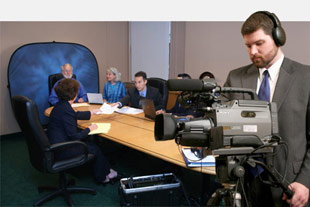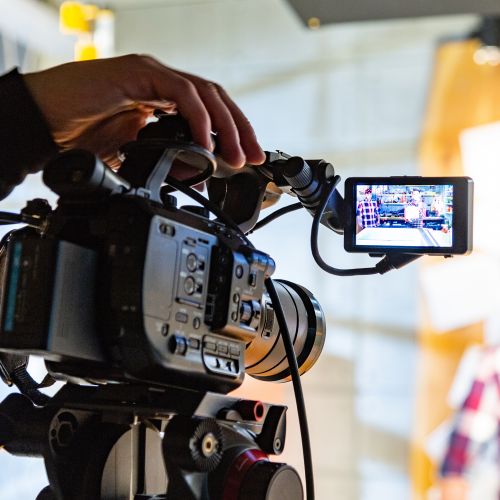Why Lawful Videography Is Crucial for Accurate Court Recordings
The function of lawful videography in court settings can not be overstated, as it offers as an essential tool for protecting the integrity of court documents. The ramifications of incorporating lawful videography into basic court room techniques increase crucial inquiries concerning its wider effect on the lawful system.
Value of Visual Evidence
In the world of lawful procedures, the importance of aesthetic evidence can not be overstated. Aesthetic proof functions as an effective tool in establishing facts, proving testaments, and enhancing the general clearness of a case. This sort of evidence, which consists of photos, videos, and representations, can supply a tangible context that verbal summaries usually lack, therefore using juries and judges a clearer understanding of the scenarios bordering a situation.
In addition, aesthetic evidence help in the retention of info. Human cognition is inherently aesthetic, and individuals are more probable to keep in mind and comprehend details provided in an aesthetic layout. In the courtroom, this can be crucial, as engaging aesthetic proof can sway opinions and reinforce the story presented by legal agents.
Additionally, making use of aesthetic proof can reduce misconceptions and ambiguities that usually occur from verbal exchanges. By supplying a straight representation of events, visual evidence helps to remove subjective interpretations and fosters a more objective examination of the realities. The integration of visual proof into legal procedures not only enhances the integrity of the judicial procedure yet likewise improves the possibility of attaining a simply end result.
Capturing Non-Verbal Signs
Utilizing advanced videography strategies can substantially improve the capture of non-verbal cues during legal process. Non-verbal communication, consisting of faces, body language, and eye contact, plays a vital function in conveying feelings and purposes that might not be clearly mentioned in verbal testimony. legal videography. Lawful videography utilizes high-definition electronic cameras and critical angles to guarantee that these subtle signs are taped with clarity and precision
The capacity to evaluate non-verbal actions can supply beneficial context to declarations made throughout court sessions. For example, a witness's unwillingness or self-confidence can be analyzed with their pose or motions, possibly affecting the court's assumption of trustworthiness. The use of close-up shots can aid concentrate on a speaker's expressions, enabling for a more nuanced understanding of the testament.
Additionally, incorporating multiple cam angles can produce an extensive view of interactions, highlighting characteristics in between events entailed. This complex technique not just enhances the accuracy of the court record yet likewise help in maintaining the integrity of the judicial procedure - legal videography. Eventually, capturing non-verbal cues through lawful videography cultivates a richer, much more full depiction of court discover here room process

Enhancing Statement Integrity
The dependability of statement can be substantially bolstered with using top quality lawful videography. Video clip recordings function as an unbiased medium that catches not just the spoken words of witnesses but also the subtleties of their delivery, consisting of tone, pacing, and emotional expressiveness. This complex documentation offers a description clearer understanding of the witness's reputation and intentions, which can be pivotal in lawful procedures.
In addition, legal videography lessens the capacity for misinterpretations that might occur from composed transcripts alone. When jurors can observe a witness's temperament and body movement combined with their testament, they are better furnished to assess the credibility and integrity of the proof offered. This aesthetic context can strengthen the testimonial narrative, making it a lot more compelling and trustworthy.
Additionally, the existence of a video recording can deter prospective variances in statement. Witnesses may be more mindful in their declarations when they know they are being tape-recorded, leading to even more exact and honest accounts. Generally, premium lawful videography boosts the honesty of testament, ensuring that the court has access to a complete and truthful representation of the truths as important site shared by the witnesses.
Supporting Appeals and Reviews
Legal videography plays an important function in supporting charms and reviews by supplying a thorough aesthetic record of courtroom procedures. This visual paperwork captures not just the spoken words of witnesses and lawyers but also the subtleties of body language, tone of voice, and court dynamics. Such aspects can be critical in understanding the context of testimonies and debates provided.
In the appellate procedure, where the focus is on mistakes of regulation and step-by-step justness, a video document can offer as an important tool for appellate courts. It enables judges to assess the original test context, making certain that choices are based on a full understanding of the proceedings. The ability to visually assess the behavior of witnesses or the interactions between celebrations can disclose understandings that created transcripts may ignore.

Furthermore, legal videography can assist in clarifying obscurities in statements or step-by-step judgments, thereby strengthening the basis for an appeal. By using a dependable, unbiased account of what taken place in court, legal videography not only supports the honesty of the lawful procedure however also empowers all parties involved to make enlightened choices regarding their instances.
Enhancing Courtroom Processes
Enhancing court efficiency, lawful videography simplifies procedures by offering immediate accessibility to aesthetic records of process. This innovation enables courts, attorneys, and juries to take another look at important statement and evidence, making certain that all events have a clear understanding of the instance. By recording the nuances of verbal and non-verbal communication, videography improves the record, making it easier to realize the context and weight of statements.

Furthermore, video clip recordings can promote remote engagement in hearings, allowing for better flexibility in scheduling and engagement, which is specifically valuable in complex situations including several stakeholders.
Final Thought
Finally, lawful videography plays a vital function in guaranteeing accurate court recordings by providing essential visual evidence that records both verbal and non-verbal interaction. This technique improves the dependability of statements, sustains appellate evaluations, and enhances court room procedures. By fostering a detailed understanding of court room characteristics, lawful videography inevitably adds to a lot more equitable judicial outcomes, reinforcing the integrity of the lawful system and helping with informed decision-making.